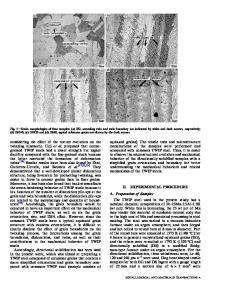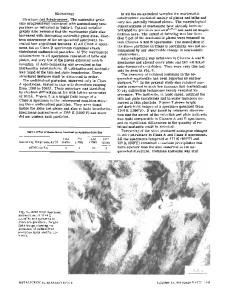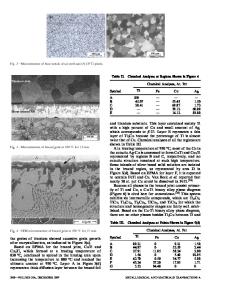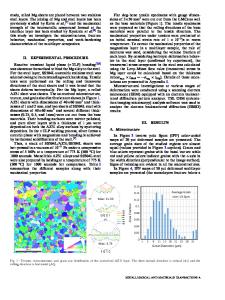Microstructure characteristics and mechanical properties of the interface layer of coated steel insert-aluminum bimetals
- PDF / 570,706 Bytes
- 9 Pages / 584.957 x 782.986 pts Page_size
- 86 Downloads / 474 Views
Medhi Malekana) School of Metallurgy and Materials Engineering, College of Engineering, University of Tehran, Tehran 1417614418, Iran
Bahram Nami Department of Mechanical Engineering, Shahid Rajaee Teacher Training University (SRTTU), Tehran 1678815811, Iran
Hamed Hoseiny Corrosion Research Group, Research Institute of Petroleum Industry (RIPI), Tehran 1485733111, Iran (Received 29 October 2016; accepted 11 January 2017)
The effect of aluminizing and Cu electroplating of the steel insert in fabrication of Al-matrix bimetal on the microstructure and mechanical properties of the interface layer was investigated. Compound casting process was used to fabricate Al-matrix bimetals reinforced with coated steel insert. The microstructures at the interface region were studied using light optical and scanning electron microscopes and energy dispersive X-ray spectroscopy. The interfacial shear strengths of the fabricated bimetals were compared using push-out test. The results showed that electroplating with copper and aluminizing of steel insert in aluminum matrix led to significant improvement of metallurgical bonding between the steel and aluminum cast matrix. Cu-coated insert contained a thicker and uniform reaction layer formed at the interface between the steel insert and aluminum matrix compared to aluminized coated insert. The results of push-out tests indicated higher interfacial shear strength for the bimetal with Cu-coated insert despite possessing a larger thickness. I. INTRODUCTION
The use of light materials has attracted considerable interest in transportation industry to enhance the engine performance and reduce fuel consumption. This cannot be achieved by only use of light metals but often requires tailor-made materials which can preserve other properties such as strength, toughness, etc. In this respect, the aluminum alloys are used extensively in transportation industry due to their low weight and good corrosion resistance compared to steel. However, to improve the mechanical strength of the aluminum components they can be reinforced by a stronger metal insert such as steel alloys especially at the load-bearing regions. These materials which are made of a lighter matrix (such as Al) and an insert with higher strength (such as steel) are called bimetal.1,2 One of the principal methods to fabricate the bimetals is compound casting. In compound casting two metallic metals, one solid and one in liquid state, are combined,3,4 in a way that a diffusion zone between the
Contributing Editor: Jürgen Eckert a) Address all correspondence to this author. e-mail: [email protected] DOI: 10.1557/jmr.2017.32
two materials is created, hence, a continuous metallic transition from one metal to the other is formed.4,5 Difference in chemical and physical properties of Al and Fe as well as their limited solubility at the contact temperature are of the main challenges in compound casting of these two metals.6 In addition, the formation of intermetallic phases at the reaction zone is the other difficulty one may face in combinin
Data Loading...











